If you are the sort of person who loves to interact with sharks and you are not fearful of their presence, Cabo San Lucas is a great place to be.
This is one of the best locations for those who wish to see sharks, especially in the marine park and corridor.
To learn more about the sharks of Cabo San Lucas and all the precautions that need to be taken, please be sure to check out the following guide.
Contents
So… Are There Sharks in Cabo San Lucas?
Cabo San Lucas visitors and residents are given the chance to interact with sharks on a regular basis if they so choose.
There are no shortage of marine animal species here and sharks are chief among them.
Anyone who is looking to spend time with specific shark species will need to know when and where to go, though.
The larger sharks tend to be found out in the open ocean.
The Gordo Banks is a common spot for them, as this area provides the sharks with the necessary current and a regular supply of smaller fish to snack on.
Whale sharks are located in the La Paz area and are most commonly sighted during the months of November and April.
From December to August, the Cabo Pulmo Marine Reserve serves as the perfect location for anyone who would like to see bull sharks.
The sheer visibility is often surprising to visitors, but there is nothing to be afraid of.
Diving adventures can be scheduled by anyone who is looking to spend time with sharks or you can appreciate their majestic beauty from afar.
Officials have issued warnings in the past to swimmers in Los Cabos, which is something that visitors should be bearing in mind.
That is not to say that the area is dangerous, but it is information that visitors need to remain cognizant of.
Back in 2020, this beach (which can be found in Cabo San Lucas) had to be shut down after a shark stole a piece of a fisherman’s catch.
Sharks that reside here are not usually aggressive towards humans and only tend to make their presence known when the other marine populations start to rise.
As long as bathers remain cautious, they should not have anything to worry about during a Cabo San Lucas stay.
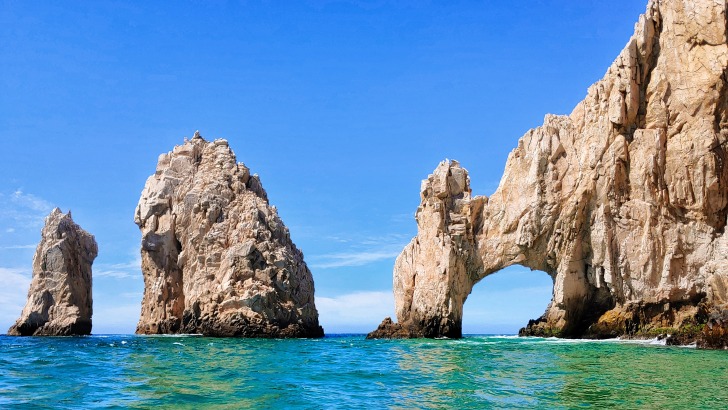
The following rundown will provide readers with a clearer picture of the shark species that can currently be found in Cabo San Lucas.
In most instances, their presence is more seasonal in nature.
Great White Shark
As the largest predatory fish on the planet, the great white can be scary but there is nothing to worry about.
These 20-foot-long fish are not spotted near the Cabo San Lucas shores.
The only way that you are going to see a great white shark during your Cabo San Lucas trip is if you take the time to travel out to Guadalupe Island.
Bull Sharks
Bull sharks are considered to be one of the most aggressive shark species, but they do not wish to attack humans.
They will only do so in the most extreme of situations and these situations are simply not likely to arise during a Cabo San Lucas trip.
They focus all of their aggression on their prey.
Their ability to switch from freshwater to saltwater helps them to migrate more easily and they can be found at Cabo Pulmo National Park throughout the year.
Whale Sharks
Whale sharks are large in size but they are nothing to fear.
These gentle giants will feast on plankton, krill, and small fish.
Humans do not have to worry about their presence.
They are filter feeders that do not look to attack people.
This makes them the perfect shark species for diving adventures with the whole family.
They are usually found in and around La Paz during the months of October to April.
Blue Shark
The blue shark more than lives up to its name, with cobalt skin that is sure to stand out to divers who are spending time in the Cabo San Lucas region.
This skin allows them to camouflage themselves while they are swimming in the ocean more easily.
They are larger in size but they prefer to feed on squid and smaller fish.
They are also great hunters with a superior vision that allows them to make up ground on their prey.
Visitors can swim with these sharks from the months of December to April.
Hammerhead Shark
Scalloped and smooth hammerheads are regularly found in Cabo San Lucas.
These are some of the most unique sharks that you are ever going to see.
The shapes of their heads and the wide set of eyes allow them to see things most other sharks cannot.
In fact, experts believe that they have 360-degree vision.
From January to August, visitors can find them in Baja California.
Mako Shark
These sharks are quite frightening to those who have never seen them before and with their protruding teeth, it is easy to see why.
They are the fastest sharks on the planet and are also known for their astonishing agility.
Mako sharks can even propel themselves out of the water.
Their speed allows them to hunt the fastest fish as well.
The Cabo coast is one of their favorite spots to hang out, as they can be found there between the months of December and June.
Silky Shark
These handsome sharks have skin that looks just like silk.
They prefer to spend their time in deeper waters in subtropical areas.
If a shark diver is truly fortunate, they are able to see these sharks feasting on a ball of sardines with their fellow predators.
The silky shark loves to migrate and is often found in Cabo San Lucas during the months of June to January.
Is It Safe To Swim In Cabo San Lucas?
Cabo San Lucas has made it very easy for swimmers to know whether they are safe or not.
If the beach has been marked with a green flag, this means that it is safe for swimming.
Beaches that have been marked with a red flag need to be avoided at all costs.
These red flags are not put up due to shark attacks or anything of the sort.
These beaches are unsafe for reasons that have nothing to do with marine life.
Some beaches are closed off because of very strong waves and undercurrents that are dangerous to even the most experienced swimmer.
There are also steep ocean drop-offs to be concerned with.
The swim able beaches do not pose any such dangers.
Visitors and residents alike can enjoy them without any of the usual concerns.
If you see a beach that has been red-flagged, please adhere to these warnings for your own safety.
There is no reason to put any of these red flags to the test.
Interesting Shark Facts In Cabo San Lucas
The presence of sharks in Cabo San Lucas will have people convinced that they are in danger but did you know that shark attacks are actually incredibly rare in this location?
In fact, you can count the number of incidents that have taken place on one hand.
Neither of these attacks was fatal, either.
In 2005, a surfer’s foot was bitten.
In 2008, a smaller shark bit a man’s toe.
While neither of these incidents was ideal, there is not much to support the idea that residents and visitors are in any real danger.
While most believe that all sharks reside in the ocean, there are some that reside in freshwater.
The freshwater species tend to be rare in nature and are often known as “river sharks”.
For the most part, freshwater sharks reside in places like Central and Southeast Asia and Australia.
There are 43 different species of shark that will pass through freshwater, but that does not mean that they can all survive in these bodies of water.
That’s because most sharks do not have the ability to adapt to these temperatures.
The body chemistry of the average shark is designed to match the temperature of the saltwater around them.
As a rule of thumb, saltwater sharks require temperatures of at least 75 to 84 degrees Fahrenheit in order to survive.
Freshwater does not provide the same level of warmth, which is why most sharks will simply pass through for migration purposes.
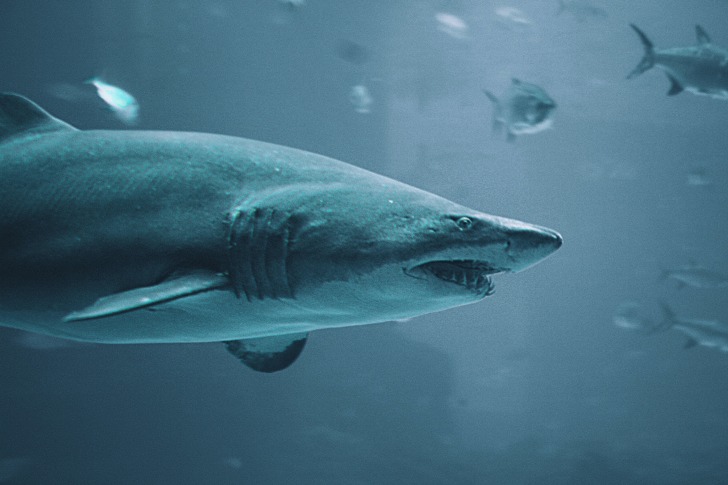
3 Safety Tips for Swimming in Shark-Infested Waters
1. Don’t Wear Shiny Jewelry
Shiny jewelry may seem harmless to most but in reality, this is a horrible decision that could attract unwanted attention from hungry sharks.
This type of jewelry will look like fish scales to them and have them circling you before you know it.
Bright and contrasting colors are also a major no-no, as they will attract the attention of famished sharks as well.
2. Stay In a Group Setting
When people are attacked by sharks, it is because they have decided to venture off on their own.
That’s why it is imperative that swimmers remain in a group setting.
This is one of the easiest ways to ensure that a shark does not take an unwanted interest in you.
3. Don’t Swim In The Dark, at Dawn or at Dusk
The reasoning here is easy enough to understand.
Sharks become more active during these times of the day.
Sharks are also active at dawn, so be sure to avoid this time of day as well.
Summary
Cabo San Lucas may have a noticeable shark presence, but there is no reason for a visitor or resident to worry.
Shark attacks happen on a very infrequent basis and have yet to become fatal on the rare occasion that they do take place.
As long as the swimmer uses common sense and avoids any beaches that have been red-flagged, they should not experience any issues.
Cabo San Lucas Safety Overview
READ THE FULL REPORT: Cabo San Lucas Safety Review
Safety Index:
- OVERALL RISK: MEDIUM
- TRANSPORT & TAXIS RISK: MEDIUM
- PICKPOCKETS RISK: HIGH
- NATURAL DISASTERS RISK: LOW
- MUGGING RISK: LOW
- TERRORISM RISK: LOW
- SCAMS RISK: HIGH
- WOMEN TRAVELERS RISK: LOW
Frequently Asked Questions
Are Shark Attacks Common?
As mentioned above, there have only been two known shark attacks in Cabo San Lucas and it has been over ten years since the last one took place.
Neither was fatal.
Why Are Shark Attacks So Rare?
These attacks tend to be hit-and-runs.
That’s because the shark does not like the taste of humans.
If an attack does take place, a quick bite occurs before the shark realizes that it would rather be eating something else.
As long as you are not placing yourself directly in their path, they do not have much interest in non-marine life.
Can a Visitor Swim With the Sharks?
While there is no reason for you to take your life into your own hands, there is no shortage of designated locations where visitors are able to swim alongside sharks.
Many of the species that can be found in Cabo San Lucas pose no threat to humans.
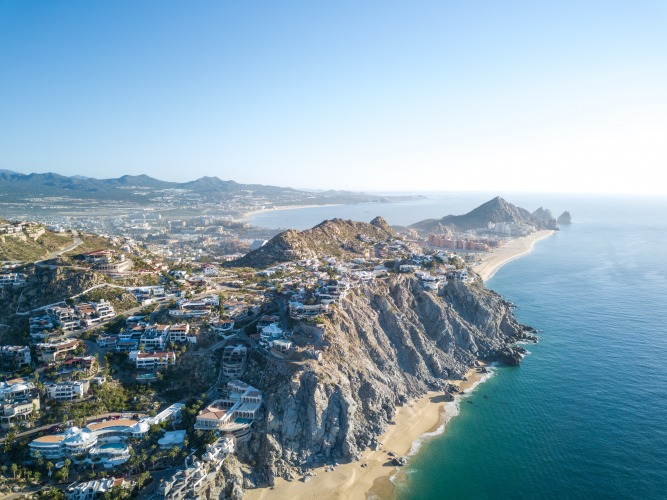
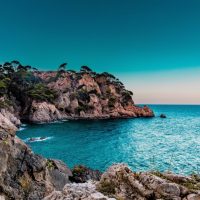
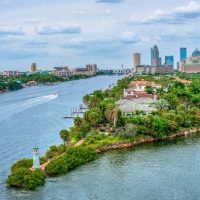


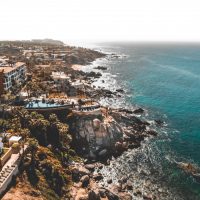





Cabo San Lucas is a great place for those who love to interact with sharks and are not fearful of their presence, with a variety of species found in the marine park and corridor, but visitors should always take necessary precautions and adhere to safety warnings.